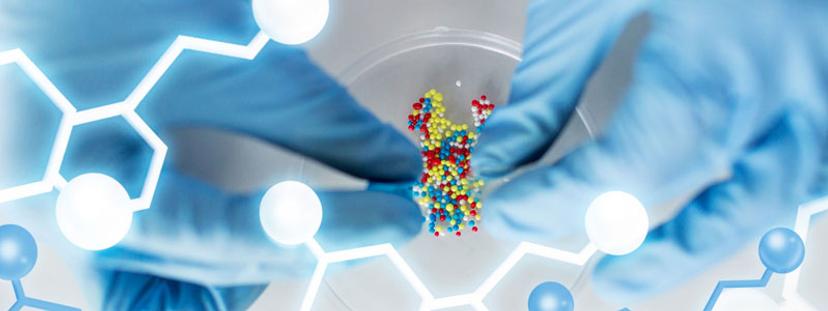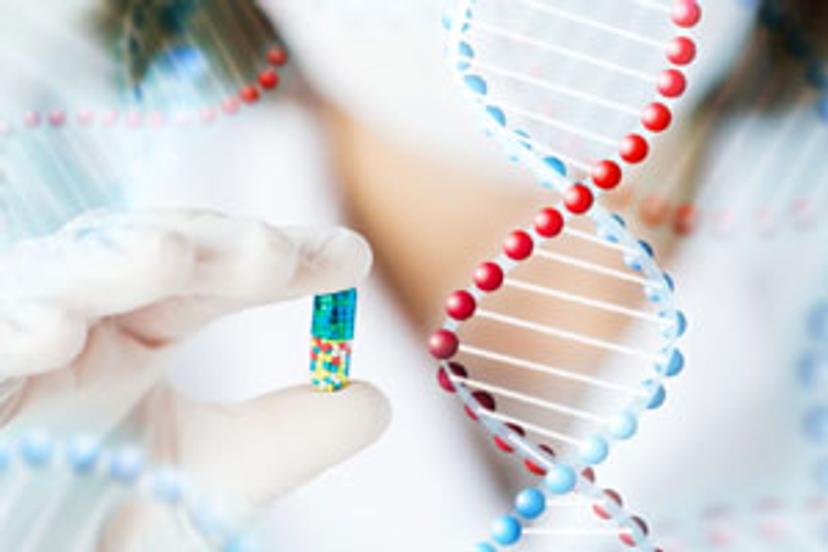The future of drug discovery: Precision medicine through biomarker research
Discover how scientists at Medicine Discovery Catapult are using biomarkers to tailor approaches to patient care, in this exclusive interview with Dr. Sally Price
14 Oct 2019
The use of clinical biomarkers has grown exponentially since they were first employed in the 1970s. The role of biomarkers for precision medicine in oncology is already prevalent and other disease areas are now following. Medicine Discovery Catapult (MDC), an independent technology and innovation company, is focusing on biomarkers within these other disease areas to develop personalized drug therapies.
Dr. Sally Price is Head of Cell and Translational Science at MDC. She leads a number of different teams involved in biomarker discoveries within drug development, developing complex humanized cell models and also increasing core imaging of biomarkers. Here, SelectScience® catches up with Price ahead of her session at ELRIG Drug Discovery in Liverpool, UK, November 5-6, as she guides us through the current developments around biomarkers within drug discovery, challenges associated with the field and how MDC hopes to overcome them, and her thoughts on the future.

Tell us more about the goals of your work at the Medicines Discovery Catapult
The work that we do here at MDC primarily supports small and medium-sized enterprises (SMEs) and academics who have potential drug projects or technologies that will advance our abilities to deliver drug discovery projects. It is looking at progressing projects by supporting the right experiments with the very best technologies and most human relevant experimental approaches to have a positive impact on patients.
In order to achieve this, we work with a variety of different types of organizations, so small and large companies, universities, research active charities, and numerous other organizations, because we believe that it’s that whole sector responsibility to drive some of these activities forward.
The types of support that we give comes in a few different forms. Our simplest offering is just being able to help particularly the smaller companies with cutting-edge technologies. Some of these may be either just too expensive for companies to invest in or they might not have the expertise to run certain experiments, so we can do that work for them quite simply. We also have more complex collaborative projects, where we’re looking to innovate together with partners to try to do things a bit differently within drug discovery.
My team is interested in bridging the gap between basic science and early-stage drug discovery projects, through to clinical trials and the real patient population. The work at MDC addresses the challenges that lie in the middle of these activities but, importantly, we view this as bidirectional. We think about patients very early in drug discovery, to design the right experiments with the best chance of succeeding in the clinic, but also use patient data to inform early drug discovery activities.
How are biomarkers currently used in drug discovery and how that is helping to advance precision medicine?
I think biomarkers are used in drug discovery, specifically, precision medicine, in a few different ways, but critical at the moment is that these depend a lot on the therapy area that is being investigated. Early on in drug discovery, you need to know quite a lot about the disease and whether there are the tools available to actually study the patient population that you're interested in. This is why oncology is far more advanced in terms of precision medicine, compared to other disease areas, because in oncology we often know the specific mutations or pathways of interest. Where these are well understood we can model them in our studies.

In oncology, biomarkers may be used to determine drug-target engagement and effect, or pharmacodynamics in cell models with the appropriate mutations. You can also use some of this earlier work to start thinking about how you are going to position that potential drug within the disease area. Following on from this, the same biomarkers may be studied in animal models bearing tumors with specific disease-relevant mutations. You can look at biomarkers alongside your pharmacokinetic and pharmacodynamic work, and again do further work in disease positioning. It is important in these early stages to make sure that you've got robust methods that are going to work, so making sure that you validate the tools and methods, in order to use those as the project progresses further towards the clinic.
As the project progresses towards the clinic and you are starting to think more about clinical biomarkers, you can start to consider biomarkers to demonstrate proof of mechanism of drug action and using biomarkers for patient selection for later clinical trials. Some biomarkers may be developed as companion diagnostics and you will need to be thinking about developing the diagnostic assay, maybe with a partner in parallel to the drug. These biomarker activities are now routine in many areas of oncology and we are starting to see advanced therapies have impact in the clinic. If you then look at other disease areas, it is quite difficult to stratify the patient populations and so it is very difficult to have a precision medicine approach. A lot of this is because the disease is less well understood.
In general, diseases where you have a single causative gene change are currently more amenable to precision medicine studies. For example, spinal muscular atrophy can now be treated with gene therapy because the causative gene is known. For other disease areas, precision medicine approaches are in their infancy, maybe there is a smaller genetic component or maybe there's a number of genes that contribute to risk of disease.
Research using omics approaches, genome-wide association studies, and more sophisticated ways to analyze the data of patients are now starting to have an impact in terms of stratifying the patient populations. These areas are research-intensive in terms of understanding the patient populations and I think as we get more data from those, we will be better able to design biomarkers and enable precision medicine approaches.
What are some of the technical challenges associated with using biomarkers in drug discovery?
There is the challenge around understanding the disease. We need a good understanding of the disease biology and patient heterogeneity to develop new biomarkers and medicines. Many diseases, especially chronic diseases, have a variety of factors implicated in the aetiology, which may be, for example, genetic, environmental or lifestyle. All of these can lead to changes in a variety of biological pathways, with potentially different pathways or mixtures of pathways causing the same disease pathology. We need to understand these differences in patients in order to design new assays for early drug discovery and models for preclinical evaluation. Some of this will be a data challenge in how we integrate large amounts of data to enable the design of these new lab-based tools and models.

The actual tools we use also have a number of problems, which vary dramatically, depending on which technologies you are using. For example, we rely quite heavily on animal models at the moment, many of which model the final disease pathology by irrelevant mechanisms rather than any real disease drivers.
Then there are also technical challenges. These could include challenges with reagents, for example, antibodies are used extensively but many poorly recognize the antigen of interest, particularly in fixed tissue.
There is some great work being done with whole body imaging biomarkers but there are still challenges around resolution. I think these studies will be really exciting in the future because they can be non-invasive, and we will be able to study more biomarkers in humans. but we need that resolution to give us further information before they can be utilized more widely. We have seen big leaps forward in some technologies.
For example, MDC carries out mass spec imaging and the resolution of this technique is starting to improve greatly. We're starting to get much more granularity in the data, but there is still a long way to go, compared to microscopy.
There are still issues with sensitivity in many assays or challenges of needing using large sample volumes to run these. Plasma is a rich and more accessible source for biomarkers but there are still many challenges in using theses for example if you are looking for less abundant proteins amongst the highly abundant proteins that you see in those samples. There are quite a lot of different technical issues, but there are also a lot of things being done about each of those challenges, individually and collectively.
What key methods and technologies do you use to overcome the challenges involved?
For our biomarker work at MDC we can use two different approaches; either hypothesis-driven or hypothesis-free and these will also determine which technologies we use.
In hypothesis free approaches, there is an unbiased approach to look for novel biomarkers. These approaches tend to involve larger omics studies, looking at large numbers of biomarkers, whether they might be genes, transcripts, proteins, lipids or metabolites. Technologies used for these studies include a variety of mass spectrometry approaches, sequencing studies and array platforms. At MDC we particularly focus on mass spectrometry and mass spectrometry imaging approaches. Once hits are discovered from omics technologies, hypothesis driven and hypothesis free studies usually converge on similar technologies as assays need to be designed that are high throughput, reproducible, easy to interpret and suitable for use in a clinical setting.
In a biomarker driven approach, there will be one or more biomarker or pathway implicated and assays are designed to look at this particular biomarker or biomarkers. One of the ways we do those studies is using our NanoString technology, this still looks at a large number of genes or proteins that may be changed, but these have been selected for particular disease areas or processes e.g. oncology or neuroinflammation. You can add additional genes or proteins of interest in a more targeted way.
We can use what would be considered maybe to be more conventional technologies, but we have nice improvements on those technologies. Immunohistochemistry is used extensively for clinical biomarker studies because it can be done routinely in hospital labs. We are working on new methods that increase the sensitivity of detection of biomarkers and allow multiplexing, as well as the analysis of the data by digital pathology. This allows you, for example, to compare changes in morphology with molecular biomarkers, adding strength to that data. Technologies like PCR and ELISA are also widely used within hospital settings — but we are looking at improvements to those technologies, so, for example, digital versions, which enable greater sensitivity. With these technologies we can study biomarkers that previously would have maybe been amongst the noise.
We are also developing methods, where we can look at using much lower sample volume, so that you can get, for example, information from blood spots, instead of having to collect bigger volumes of blood, and looking for alternative biological materials that you can get biomarkers from, so looking at other body fluids that are more accessible, or things like hair, nails and breath — all those different types of samples that can hopefully mean we can do more sampling but in a much less invasive way.

Tell us about the session you're chairing at ELRIG Drug Discovery - how those attending will benefit?
We've got some highly regarded scientists within the session, but I think also what is interesting is we've got a diverse set of organizations represented by the speakers. We've got large pharma; we've got SMEs; we've got academia; we've got contract research and obviously ourselves at MDC as a research technology organization. The title of the meeting being "Back to the Future," we're going to take a look at some of the progress that we have made in biomarkers. It's been a rapidly evolving field through the years, and it's had significant impact on many projects and many patients lives., We’re going to look at what we've learned from our work so far and where we need to move to in the future. Scientists attending will hear about how we can apply some of the new technologies, but also new ways of working to progress biomarkers, and how to make sure that every project is considering a biomarker strategy.
In terms of speakers, we've got high profile scientists including Peter O'Toole from the University of York, and Gregory Hamm from AstraZeneca. They are carrying out some leading research in terms of imaging-based biomarkers. Peter covers the microscopy side of things and will talk about the latest super-resolution techniques, whereas Gregory is a mass spec imaging expert, so will talk about that. Imaging technologies are starting to attract significant interest within the biomarker field and so we will learn more about how to apply these techniques.
We have Andrea Malaspina from the Blizard Institute, and he will be giving much more of a clinical perspective on his research. He looks at neurodegenerative disease biomarkers and obviously that is an interesting area because a lot less has been done in terms of biomarkers in neurodegenerative diseases but there is a lot of current interest in developing biomarker strategies in this disease area. Then we have Chantal Bazenet, from Evotec who will continue the neuroscience theme and describe how Evotec helps companies with biomarkers for neuroscience drug projects.
My co-chair, Ian Pike, is going to be talking about some novel approaches to biomarker discovery and utilization; he's got a particular focus on protein biomarkers. Finally, I'll be giving a talk with a company called TherapeutAix whom we've collaborated with on a project looking at developing biomarkers for fibrotic diseases, so again a very different disease area where we can maybe focus on what we have learned from oncology.
Register to attend ELRIG Drug Discovery 2019 today>>
What are you working on next and what you see for the future of biomarkers for precision medicine?
There is a big focus within MDC on trying to humanize drug discovery work. We're interested in the measurements that are and can be made from the actual patients who have the disease. We are analyzing these human samples or human cell models with several of our high-end technologies simultaneously so that we can maximize the information available to guide drug discovery projects. We will continue to collaborate with technology providers to make sure we continue to improve the detection of biomarkers and test these technologies with real biology. These innovations will allow better drugs to get to the right patient populations and increase success in the clinic.
I think oncology will continue to lead the future of biomarkers for precision medicine, but we will increasingly see the use of biomarkers for patient stratification in other disease areas. This holds hope for many disease areas where drugs have been designed for complex diseases as if they were a single patient population. I also think there will be a huge impact of data science as we can now get so much data including electronic records from patients. Improvements in our ability to compare across data sets will give us new insights into diseases and the biomarkers that will support new drug projects.
Discover more of the latest developments in our Precision Medicine Special Feature >>
Images copyright dolgachov (1)+ (2), Kirsty Parrgeter (3) @123rf.com
